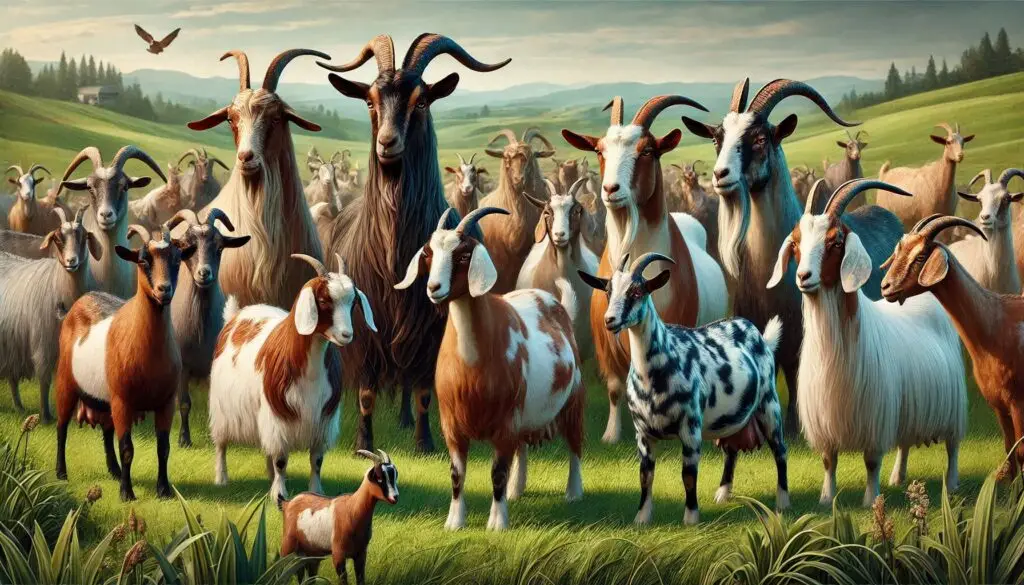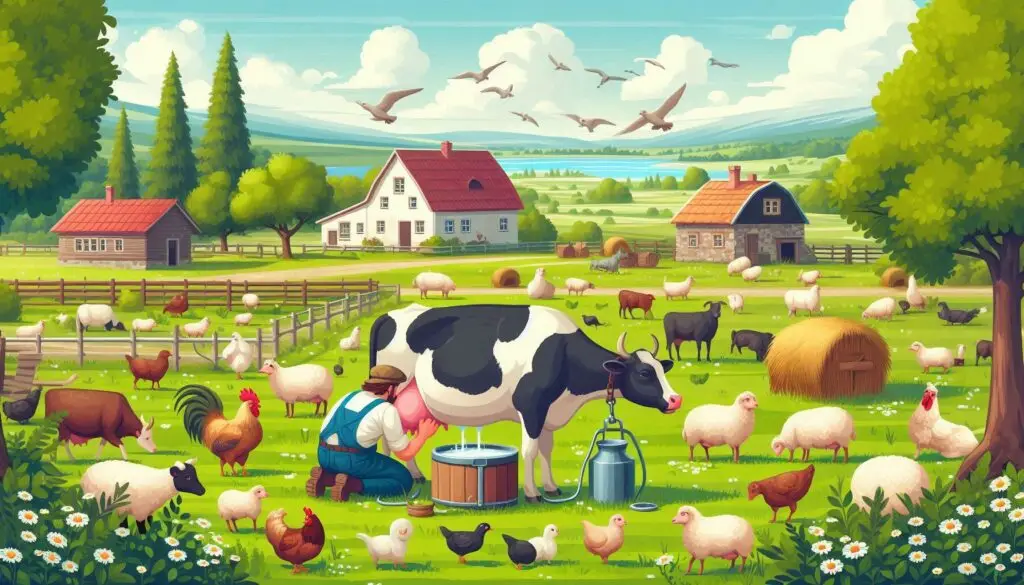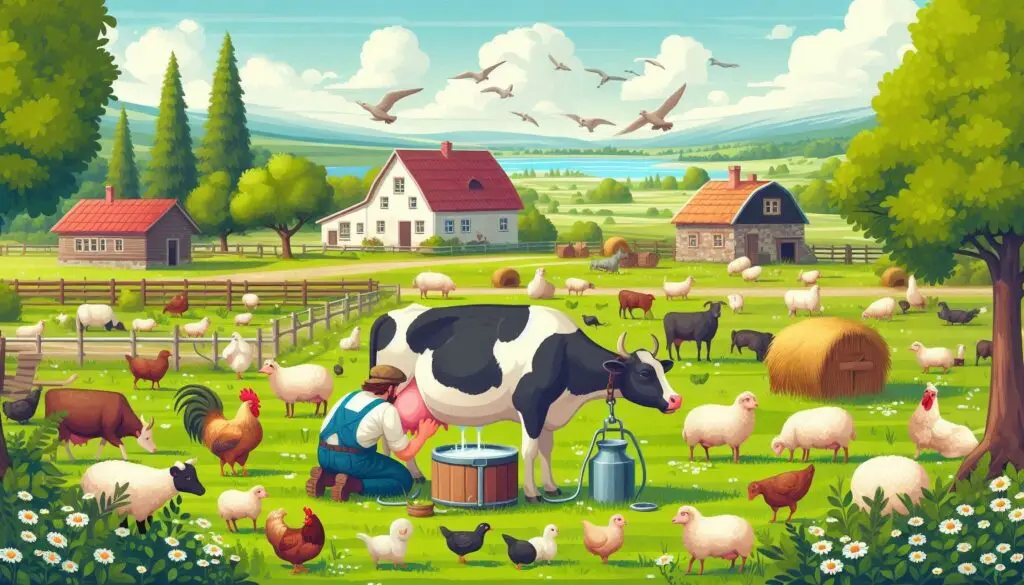Exotic Goat Breeds

Introduction
Goats are versatile animals that serve various purposes in agriculture. Among them, exotic goat breeds stand out for their unique characteristics and high productivity. This article delves into several exotic goat breeds, highlighting their origins, traits, and uses. By understanding these breeds, farmers and enthusiasts can make informed decisions about raising goats.
Understanding Exotic Goat Breeds
Exotic goat breeds are those that have been imported from other countries. They often exhibit superior traits in terms of meat and milk production. These goats are popular among farmers looking to enhance their livestock with better genetics.
Importance of Exotic Goat Breeds
- Genetic Diversity: Introducing exotic breeds increases genetic diversity within local populations.
- Higher Productivity: Many exotic breeds produce more milk or meat compared to native varieties.
- Adaptability: Some exotic breeds adapt well to various climates, making them suitable for different regions.
Popular Exotic Goat Breeds
1. Boer Goat
Overview
The Boer goat is one of the most recognized exotic breeds. Originating from South Africa, it is primarily raised for meat production.
Characteristics
- Appearance: Boer goats have a distinct white body with a brown head.
- Size: Adult males weigh between 110 to 135 kg while females range from 90 to 100 kg.
- Temperament: Known as “gentle giants,” they are calm and docile.
Production
Boer goats grow rapidly, gaining approximately 0.4 pounds daily. Their meat is lean and tender, making them highly desirable in the market. For more information on Boer goats, visit The Happy Chicken Coop.
2. Saanen Goat
Overview
Saanen goats are renowned for their milk production and originate from Switzerland.
Characteristics
- Color: Typically white or cream-colored.
- Size: Males weigh around 70 kg while females can weigh up to 60 kg.
- Ears: They have erect ears that add to their distinctive look.
Production
Saanen goats can produce up to 100 kg of milk per lactation period. Their milk has a high butterfat content, making it ideal for cheese production. For further details on Saanen goats, check out Goat World.
3. Anglo-Nubian Goat
Overview
The Anglo-Nubian goat is a hybrid breed developed in England from African and Indian goats.
Characteristics
- Appearance: They have long, pendulous ears and a convex face.
- Size: Males weigh about 90 kg while females weigh around 60 kg.
Production
This breed produces approximately 1.2 liters of milk daily with a butterfat content of around 4%. Anglo-Nubians are also valued for their meat quality. For more insights on this breed, visit Nubian Goats.
4. Alpine Goat
Overview
Alpine goats are known for their adaptability and high milk yield. They originate from the French Alps.
Characteristics
- Color Varieties: They come in various colors including black, white, and brown.
- Size: Males can weigh up to 135 kg while females typically weigh around 60 kg.
Production
Alpine goats can produce up to 1 gallon of milk daily. Their milk is known for its sweetness due to higher sugar content compared to other breeds. For additional details on Alpine goats, check Alpine Goats.
5. Toggenburg Goat
Overview
Toggenburg goats are one of the oldest dairy breeds originating from Switzerland.
Characteristics
- Color: Typically brown with white markings.
- Size: Males weigh around 70 kg while females weigh about 55 kg.
Production
These goats are prolific milk producers, yielding approximately 740 kg of milk per lactation period. For more information on Toggenburg goats, visit Toggenburg Goats.
6. Angora Goat
Overview
Angora goats are primarily raised for their luxurious mohair fleece.
Characteristics
- Appearance: They have long hair that requires regular grooming.
- Size: Adult males weigh about 70 kg while females weigh around 50 kg.
Production
Angora goats produce about 4 to 5 kg of mohair annually, which is highly sought after in the textile industry. For further reading on Angora goats, check Angora Goats.
7. Kalahari Red Goat
Overview
Originating from South Africa, Kalahari Red goats are known for their hardiness and meat quality.
Characteristics
- Color: They have a rich red coat that helps them blend into the environment.
- Size: Males typically weigh between 90 to 120 kg while females range from 70 to 90 kg.
Production
Kalahari Reds are fast-growing and produce tender meat that is low in fat. Their adaptability makes them suitable for various climates. For more information on Kalahari Reds, visit Kalahari Red Goats.
8. Damascus Goat
Overview
The Damascus goat is known for its unique appearance and large size. It originates from the Middle East.
Characteristics
- Appearance: Features a short snout and convex nose.
- Size: Males can weigh up to 150 kg while females typically weigh around 100 kg.
Production
Damascus goats can produce between 350 to 650 kilograms of milk per lactation period. Their meat is flavorful and sought after in culinary circles. For additional details on Damascus goats, check Damascus Goats.
Care Tips for Exotic Goat Breeds
Nutrition
Proper nutrition is crucial for maintaining the health of exotic goat breeds. A balanced diet should include:
- Quality hay or pasture.
- Grains such as corn or barley.
- Mineral supplements tailored for goats.
For detailed nutritional guidelines, refer to Goat Nutrition.
Housing
Providing adequate shelter is essential:
- Ensure proper ventilation.
- Keep the area clean to prevent disease.
- Provide space for exercise and social interaction among goats.
For more tips on housing requirements for goats, visit Goat Housing.
Health Management
Regular health checks can prevent common diseases:
- Vaccinations should be administered as recommended by a veterinarian.
- Routine deworming helps control parasites.
For comprehensive health management practices for goats, refer to Goat Health Management.
Conclusion
Exotic goat breeds offer numerous benefits in terms of productivity and adaptability. By understanding their characteristics and needs, farmers can enhance their livestock operations effectively. Whether you choose Boer for meat or Saanen for milk production, each breed has unique qualities that contribute to sustainable farming practices.
More from Genetics and Animal Breeding:
Heritability: Methods and Applications





Responses